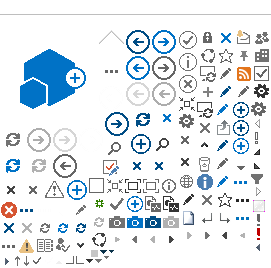To determine Coverage A under a homeowners policy, one must estimate the replacement cost of the dwelling...
To determine Coverage A under a homeowners policy, one must estimate the replacement cost of the dwelling. In determining Coverage A, should only the replacement cost be considered or should the limit include an amount for debris removal from the damaged property?
According to one line of thought, you do not include the debris removal cost in the Coverage A limit for several reasons. One is that the policy gives you 5% additional coverage for debris removal, recognizing that the Coverage A limit is adequate for both property damage and debris removal for partial losses.
An alternate approach is to include an estimate for debris removal in determining the Coverage A limit because it’s a covered expense in addition to the cost to repair or replace property—and that expense should be factored in. The extra 5% for debris removal may be viewed as a safety net when there is a total loss since estimating replacement cost isn’t an exact science. And, just as you need extra expense coverage when buying business income insurance, you need to add the extra expense when determining the limit.
Some valuation systems include a debris removal amount in the breakdown of the final replacement cost value. Others don’t, so there doesn’t appear to be a definitive answer.
What’s your opinion? E-mail bill.wilson@iiaba.net to have your expertise included in an article on IAmagazine.com. For more information, click here.
For a VU faculty discussion of this issue, click here.
Debris Removal and Trees
A windstorm blows a tree onto your insured’s home. The HO policy includes a sublimit for debris removal of trees under certain conditions. However, when removing the tree from the house in order to repair the house, does this sublimit apply or is the removal from the dwelling simply part of the Coverage A repair costs?
In a recent claim, the adjuster applied the $500 per tree sublimit to the removal of the tree from the dwelling. In the Virtual University faculty members’ opinions, the removal of the tree from the dwelling is part of the repair cost of the dwelling and included within the Coverage A limit.
The additional $500 pays for removal from the premises, hauling and dumping. As the last part of the policy provision says, this coverage is “additional insurance.” The adjuster is treating this as a limitation of coverage when, in fact, it’s a bonus coverage for trees since windstorm damage to the tree isn’t covered.
For a complete analysis, click here.
Garagekeepers vs. On-Hook Coverage
During the past year, the VU “Ask an Expert” service received five questions about the difference between garagekeepers and “on hook” coverage with regard to towing vehicles. Garagekeepers and onhook coverage are similar in that they both exist primarily to override the care, custody or control exclusion in the business auto and garage policies for customers’ autos.
Whether garagekeepers suffices without on-hook coverage depends largely on the insurer’s interpretation of “garage operations” under the garage/garagekeepers coverage.
ISO defines “garage operations” to include “...the ownership, maintenance or use of locations for garage business and that portion of the roads or other accesses that adjoin these locations...’Garage operations’ also include all operations necessary or incidental to a garage business.”
Some carriers interpret the first part of the definition to restrict coverage to the premises and adjacent roads and accesses, thus requiring on-hook coverage for off-premises towing operations. Other carriers broadly interpret the entire definition to extend coverage throughout the coverage territory.
For an interpretation, click here.
Bill Wilson (bill.wilson@iiaba.net) is Big "I" director of the Virtual University, an online learning center for agents and brokers.
